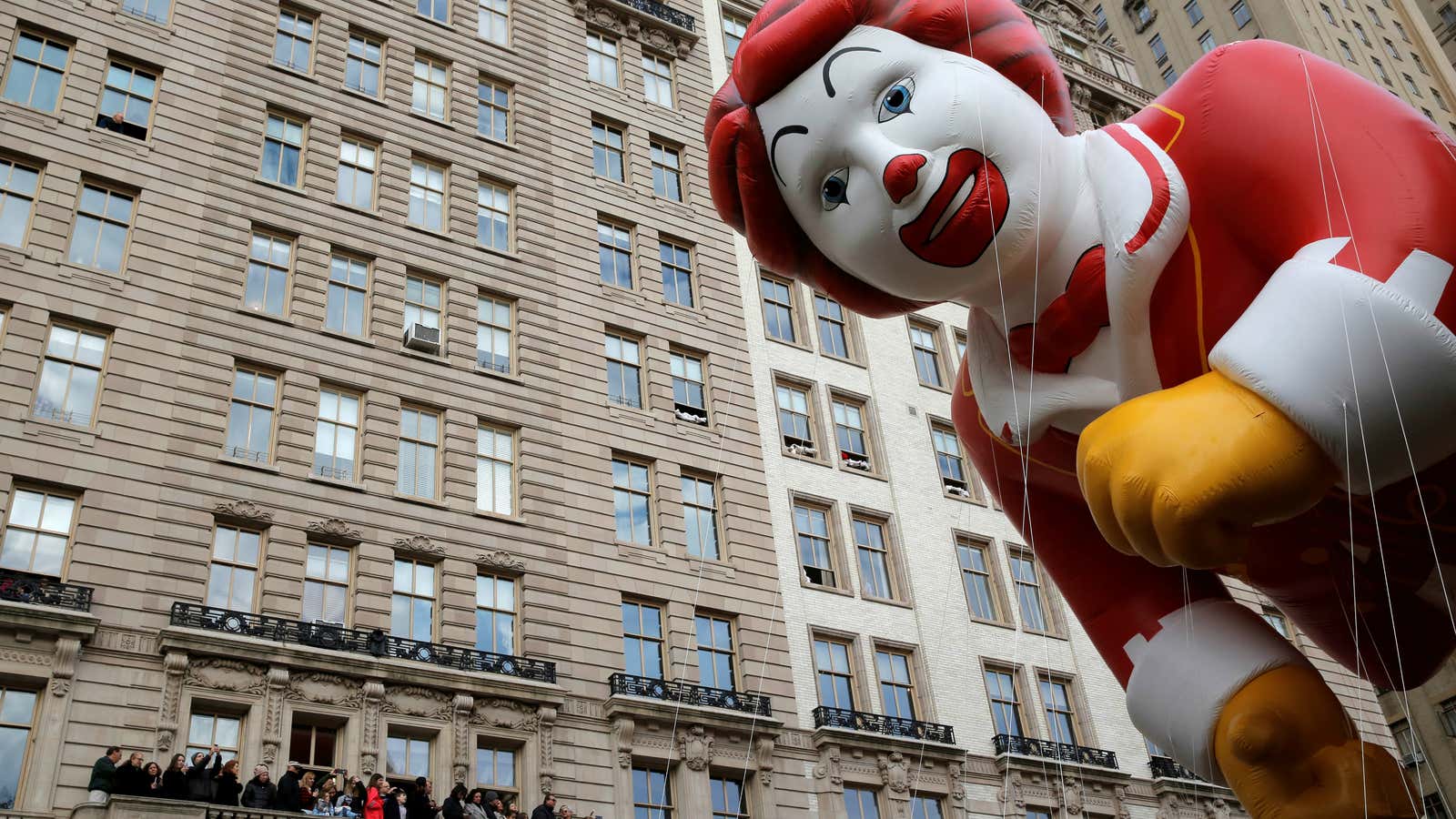There’s no doubt about the challenge ahead of McDonald’s. How do you reimagine and transform the greasiest beacon of American food on the planet into a modern restaurant chain that gives people what they want—healthier food served more efficiently? Certainly, McDonald’s has been feeling the need to change for some time. Executives there have watched same-store sales growth shrink for more than a year.
So the task ahead of CEO Steve Easterbrook is herculean—re-forging McDonald’s into a company that can compete in a much different world than the one in which it was first created. But he’s being compensated handsomely while he figures it out.
Since taking the driver’s seat at McDonald’s in 2015, his total compensation has almost doubled. According to a filing this week to the Securities and Exchange Commission (pdf, p.44), it was $15 million last year, including $9 million in stock grants and options—up from $7.9 million in 2015. It’s added incentive to play hardball in a fast-food restaurant game that has sped up, with new entrants attracting consumers with healthier options.
Easterbrook had a banner year in 2016 in his mission to breathe life into McDonald’s flagging image. The chain started offering all-day breakfast to much fanfare—which boosted sales for awhile but then that stopped. It began testing (and has is now adopting) using fresh beef for some of its burgers in the US. And already in 2017, the chain has partnered with Chobani in southern California to use Greek yogurt in its parfaits and other desserts—all steps to make the mammoth fast food chain fall into line with the trends of the day: healthier food with fewer artificial ingredients. The chain is also slowly rolling out in-restaurant self-ordering stations for customers in hopes it will speed up consumer experience.
Consumers have been demanding those kinds of changes for years, and evidence of that has become clearer over time. Take Panera Bread, as an example. The company was an early-adopter of fast-lane kiosks to help speed up the customer experience. In addition to committing to using meat from animals raised without antibiotics important in human health, it has also created a “No No List,” publicly sharing the artificial colors, sweeteners, flavors, and preservatives it promised to remove from all its menus by the end of 2016.
These kinds of moves paid off for the company, leaving stragglers like McDonald’s in the dust.
Easterbrook has his work cut out for him, but maybe the extra $7.6 million in total compensation since the year before will give him some much-needed inspiration.
